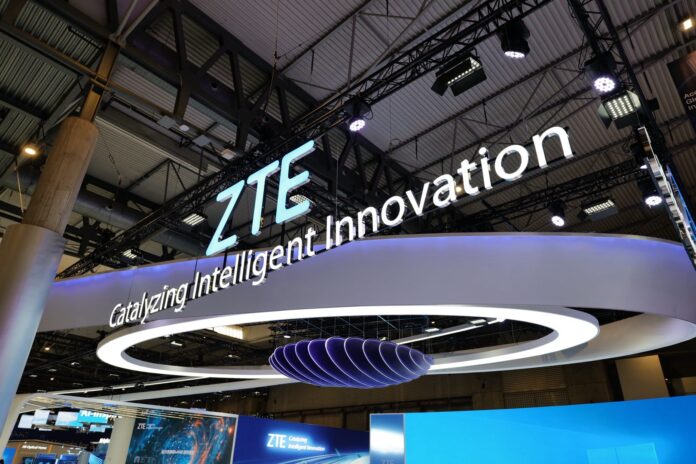In Q1, ZTE noted it had actively seized AI-driven opportunities across communications infrastructure, computing infrastructure, AI terminals and industry applications
In sum – what you need to know:
AI lifts Q1 revenue – ZTE reported a 7.8% year-over-year revenue increase in the period, driven by AI-driven growth across infrastructure, devices and industry applications.
Second-curve businesses surge – Revenue from intelligent computing and AI terminals now makes up over 35% of total revenue.
Focus on AI-powered homes and compute – ZTE is scaling up AI smartphone features and smart home offerings, while capitalizing on surging demand for servers and storage from Chinese internet giants and telcos.
Chinese vendor ZTE reported revenue of CNY 32.97 billion ($4.50 billion) for the first quarter of 2025, surging 7.8% versus the same quarter the previous year.
In a release, ZTE said it also recorded a net profit attributable to holders of ordinary shares of the listed company of CNY 2.45 billion, while net cash flows from operating activities totaled CNY 1.85 billion during the period.
In Q1 2025, ZTE noted it had actively seized AI-driven opportunities across communications infrastructure, computing infrastructure, AI terminals and industry applications. “While consolidating its core network business, the company significantly expanded its second-curve businesses — such as intelligent computing and AI terminals—bringing overall revenue back onto a growth trajectory,” said ZTE.
ZTE highlighted that revenue from second-curve businesses accounted for over 35% of total revenue during the quarter, while revenue from the government and enterprise segment doubled year-on-year, contributing more than 20%.
“In the connectivity segment, ZTE maintained its leading market position in core wireless and wired products through continuous technological innovation. While consolidating its presence in the domestic operator market, the company continued to expand its market share among international operators,” the Chinese vendor added.
In the computing power segment, ZTE said it had seized the opportunity presented by increased investments in computing infrastructure from leading internet companies, operators and industry players in China. “The company deepened market expansion and scaled up partnerships. In the first quarter, revenue from servers and storage achieved rapid growth.”
In the terminal segment, ZTE noted it had actively promoted on-device AI applications, strengthening its presence in both AI smartphones and AI home scenarios. “For households, ZTE offered four key AI-powered solutions — AI home network, AI home computing, AI smart screen and AI home robot — to drive smart home upgrades.”
Moving forward, ZTE said it will continue to deepen its investment in the AI domain. “With “connectivity + computing power” as the cornerstone, the company will work with global partners to develop practical AI solutions, foster an open and collaborative AI ecosystem and jointly drive the digital and intelligent transformation across all industries,” the vendor said.
ZTE Corporation had reported full-year revenue of CNY 121.30 billion for 2024.
During last year, net profit attributable to holders of ordinary shares amounted to CNY 8.42 billion, while net cash flows from operating activities totaled CNY 11.48 billion.
In 2024, the company’s domestic market revenue reached CNY 82.01 billion, accounting for 67.6% of overall revenue, while its international market revenue totaled CNY 39.29 billion, accounting for 32.4%. Revenue from the operator network, government and enterprise and consumer businesses amounted to CNY 70.33 billion, CNY 18.56 billion and CNY 32.41 billion, respectively.
ZTE Corporation has partnered with China Mobile to present the latest innovations in 5G-A x AI during an event at Mobile World Congress (MWC) Barcelona 2025.
During the event, the partners unveiled two key advancements — Communication-Sensing-Computing-Intelligence and Ambient IoT.
ZTE explained that the so-called “Communication-Sensing-Computing-Intelligence” solution, built on 5G-A technology, deeply integrates three key technologies to drive next-generation digital transformation:
-Merging communication and computing to create a strong foundation for digital transformation across industries.
-Combining communication with intelligence to optimize network efficiency and improve user experiences by embedding AI capabilities.
-Integrating communication and sensing to enable high-precision perception, real-time decision-making and intelligent scheduling, supporting a wide range of emerging applications.

